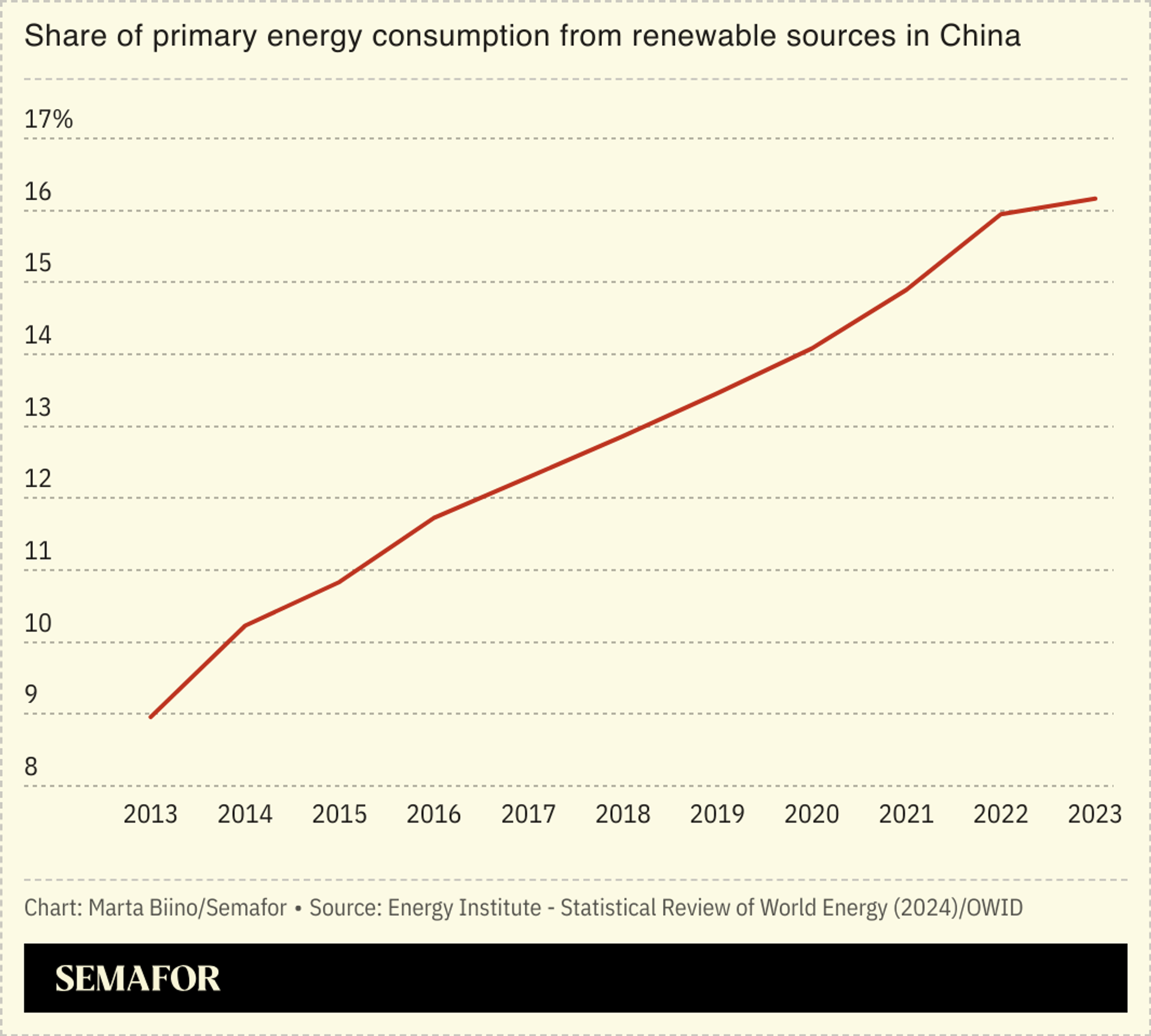The News
Beijing will invest $800 billion in its electricity grid over the next six years to speed up the country’s transition from coal to renewable energy.
The move is crucial for the country’s grid, which has been struggling to meet demand, which was up 7.4% year-on-year in the first four months of 2024 compared to 2023, the Financial Times noted, even as the country has become the world leader in green energy. In 2022, China’s investment in clean energy made up almost half of the world’s total, E&E News reported.

SIGNALS
China’s grid needs to modernize to meet demand
Beijing’s investment will support China’s “creaking” electricity grid, the Financial Times wrote, which is slowing its green transition: At least 12 of the country’s 34 provinces have told solar operators to use battery storage, and more than 100 municipalities have suspended solar projects, unable to integrate them in a way that actually helps meet demand rather than put pressure on the grid as it struggles to cope with the fluctuations that come with solar power. With electricity demand generally rising — driven by data centers and electric vehicles — the grid needs to “be more advanced,” an expert told the outlet, or China risks missing its goal of reaching peak carbon emissions by 2030 and carbon neutrality by 2060.
China leads in the green transition, but also in emissions
China has largely led the world’s transition toward green energy, and has expanded its electric grid enormously, accounting for more than a third of the world’s total grid expansion in the last decade. In 2022, its investment in electricity was higher than that of every other country in the world combined, Energy Monitor noted. But China is also the global leader in emissions, and its net-zero by 2060 target hits ten years later than the United Nations’ goal. “Though it will be the world leader in emission reductions, this is largely because it is starting from a much higher baseline than competing economic blocs. In relative terms, both the US and EU are reducing emissions faster,” Energy Monitor added.
China’s overall energy trajectory remains unclear
Despite investment in renewables, China is still highly dependent on coal, The Christian Science Monitor noted. “What has been happening in China is a tug of war between expanding renewables and growing overall power demand,” an expert told the outlet. China accounts for roughly a third of global power demand in 2024, Rystad Energy noted, and its requirements are higher than anywhere else in the world. The country also approved four times as many coal plants in 2022 and in 2023 than it did in the five years between 2016 and 2020, E&E News reported, and that coal could hinder global efforts to limit climate change driven by burning fossil fuels.

